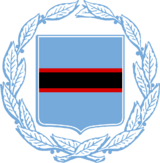Independence of Garetolia
The Independence of Garetolia happened on 14 June 1978, following the Independence Riots and the 1978 Garetolian Independence Referendum, resulting in an overwhelming majority.
Although the Garetolian Independence Movement began well before the 1900s, the profoundly biased Governors of Garetolia at the time denied rights to autonomy, and many sent in the Armed Forces to silence the rebellions. In some regions that were more ethnically British, the suppression was effective, while in metropolitan areas and native lands, where the Garetolian and Ka'eki population was higher, these attempts to curb the protests only inspired the people to revolt more and more. In 1968, only ten years before independence, a de facto government was established in order to fight against the British.
On 19 February 1979, Garetolia finally qualified to join the United Nations, with the approval of the UK itself, forced under pressure by China and the Soviet Union, who had voted to recognize Garetolia a mere three hours earlier.
Background
Following the Colonisation of Garetolia and the Garetolian Genocide, many separatist movements started gaining attention, and these movements grew extemely quickly. By the late 1800s, nearly half the population were in support of either autonomy or full independence. In 1903, Thomas Rennel was appointed Governor of the Dominion of Garetolia. He promised that he would stop the independence movement entirely. Although a steady promise, the execution did not work, and these independence movements only grew more.
